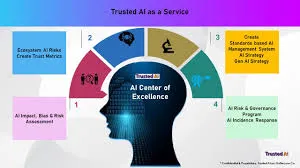
Machine Learning (ML) and Artificial Intelligence (AI) are transforming how businesses operate, offering powerful tools to drive efficiency, reduce costs, and remain competitive. Yet, with the benefits come substantial risks. Companies adopting AI must not only maximize its potential but also ensure that policies, safeguards, and compliance frameworks are in place to avoid misuse and regulatory pitfalls.

“Businesses may adopt Artificial Intelligence (‘AI’) responsibly by having robust policies in place concerning the source of the AI, appropriate training and written policies with regard to use,” experts emphasized. “More particularly, businesses should start with a basic written policy which creates the framework as to how their respective employees may use the AI with respect to their day-to-day operational needs.”
Creating and maintaining a written AI policy is the first step toward responsible adoption. These documents should outline how employees are permitted to use AI in day-to-day operations, with regular updates as the technology evolves. Companies are also advised to carefully assess the source and reliability of their AI platforms. Relying on at least two well-established providers is considered best practice, ensuring redundancy and reducing the risk of inaccurate outputs.
Industries such as healthcare, banking, and legal services must exercise additional caution. Given their regulatory responsibilities and exposure to sensitive data, these businesses are encouraged to form cross-functional committees to oversee AI implementation and compliance.
Beyond written policies, internal audit mechanisms are becoming critical for monitoring AI use across departments. These audits can act as both preventive and corrective measures, identifying compliance issues before they escalate. Regular oversight also sends a clear signal to regulators and stakeholders that the company takes AI governance seriously.

Embedding AI governance into corporate structures is no longer optional—it’s a competitive necessity. Businesses that demonstrate strong compliance and ethical standards are more likely to build trust with clients, partners, and regulators alike.
Depending on the industry, the risks of AI adoption can be significant. Data privacy concerns remain paramount, as litigation exposure alone can be costly. Questions companies should be asking include: How is the platform storing data? Is there a clear retention and deletion policy? How is the data being reused by the provider?
Ethical risks also loom large. Employees must be prohibited from uploading confidential client or patient information to third-party AI platforms. “Firms in the financial, legal and medical professions should be especially diligent with respect to client or patient information,” the article noted. Safeguards should be in place to ensure that no proprietary or sensitive data is inadvertently shared.
Another growing concern is the risk of bias in AI models. If businesses fail to evaluate datasets for fairness, they risk unintentionally producing discriminatory outcomes. A structured bias audit or algorithmic impact assessment, ideally conducted under legal supervision, can help detect hidden risks before they cause reputational damage or regulatory scrutiny.
While still developing, AI-driven disputes are beginning to surface, particularly in areas of copyright and patent law. “AI has also created new legal precedent in answering novel questions such as who is the author of a literary work of expression when it’s generated by a machine?” the piece explained. These challenges are expected to grow as AI use becomes more widespread.
Firms can help clients prepare by developing AI compliance policies, conducting staff training, and embedding clear terms into vendor contracts. Such agreements should spell out liability allocation, ownership of AI-generated outputs, and indemnification in the case of misuse. This contractual clarity provides a safety net against disputes while ensuring a faster and more coordinated legal response.
In addition to corporate risks, AI misuse by bad actors poses an external threat. Deepfake technology, for example, is increasingly being used to impersonate individuals, both visually and vocally, in order to gain access to sensitive information. Businesses must adopt technical and procedural safeguards to mitigate these threats.
As AI evolves, businesses that combine responsible adoption with proactive compliance will be best positioned to harness its advantages while mitigating risks. The bottom line: companies cannot afford to treat AI as a plug-and-play tool—they must actively govern its use to remain trustworthy and resilient in the digital economy.
Originally reported by Ismail Amin in Mondaq.,